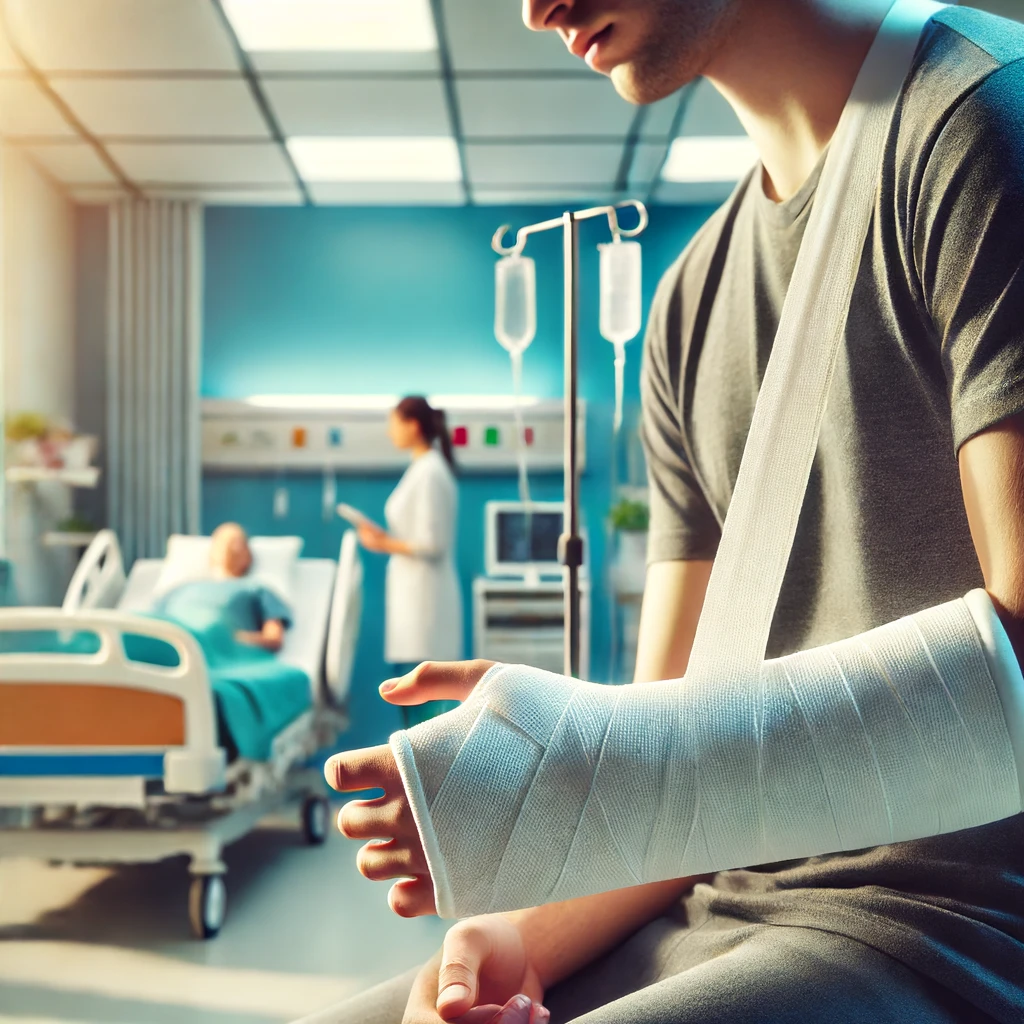Limb bone fractures can be serious injuries that require prompt and proper first aid to prevent further complications. Proper handling can significantly improve the outcome and facilitate further medical treatment. Here is a detailed guide on how to proceed in case of limb bone fractures.
1. Recognize the Signs of a Fracture
Recognizing a fracture is the first step in providing appropriate first aid. Signs of a fracture include:
- Intense pain at the injury site.
- Swelling and bruising.
- Deformity or unnatural positioning of the limb.
- Inability to move the injured part.
- A cracking or snapping sound at the moment of injury.
2. Calm the Person
Staying calm and calming the injured person is crucial. Panic can worsen the injured person’s condition.
3. Immobilize the Injured Limb
- Do not attempt to realign the bone: Never try to reposition the bone yourself.
- Immobilize the injured limb: Use splints or improvised materials (boards, sticks, firm cardboard) to immobilize the limb. The splints should cover the joints above and below the fracture site.
- Secure the splint: Secure the splints with bandages, scarves, or straps, but be careful not to tighten too much and impede circulation.
4. Control Bleeding
- If there is an open wound: Apply a sterile bandage or clean cloth to the wound to stop the bleeding. If bleeding continues, apply additional pressure, but be careful not to cause more pain or move the fracture.
5. Apply a Cold Compress
- Reduce swelling: Place a cold compress or ice wrapped in a cloth on the injured area to reduce swelling and pain. Never place ice directly on the skin to avoid frostbite.
6. Elevate the Injured Limb
- Elevate the limb: If possible, elevate the injured limb above heart level to reduce swelling.
7. Monitor the Injured Person’s Condition
- Check circulation: Periodically check the color, temperature, and sensation of the fingers or toes of the injured limb. If they become cold, pale, or blue, circulation may be compromised.
- Check breathing and consciousness: If the person becomes unconscious or has difficulty breathing, seek emergency medical help immediately.
When to Seek Emergency Medical Help?
Immediately seek emergency medical help in the following situations:
- If a fracture is suspected.
- If the injured person experiences severe pain, even after immobilization.
- If there is significant bleeding.
- If the injured person is unconscious, has difficulty breathing, or shows signs of shock (cold, clammy skin; rapid or weak pulse; dizziness or fainting).
Additional First Aid Tips for Fractures
- Avoid giving food and drink: If surgery is possible, the injured person should not eat or drink.
- Prepare for transport: If you have to transport the person yourself, ensure the injured limb is stabilized and the person is in a comfortable position.
Conclusion
First aid for limb bone fractures involves recognizing the injury, calming the injured person, immobilizing the limb, controlling bleeding, applying a cold compress, and elevating the limb. Proper and prompt first aid can significantly affect the outcome of the injury. Always seek professional medical help quickly to ensure the safety and health of the injured person.



0 Comments